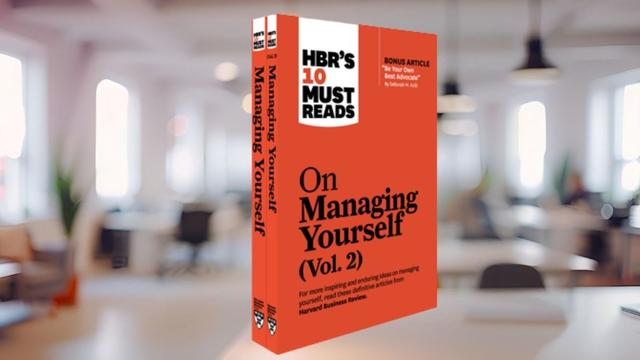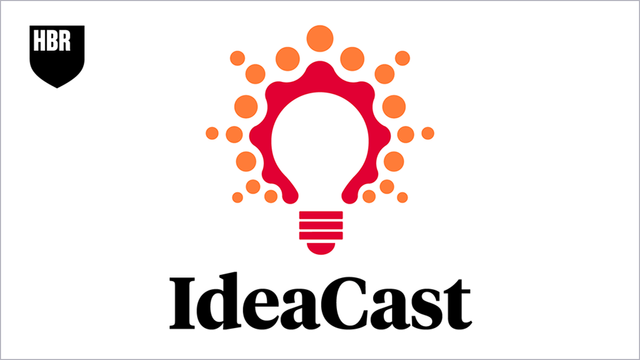Distilling insights from decades worth of essays for Harvard Business Review. This collection shows you how to bounce back from setbacks, how to be resilient. Aside from some cringey moments it's worth a read. #HBR #Business #Books #Review #Career #Psychology
http://contentcatnip.com/2025/07/30/book-review-hbrs-10-must-reads-on-managing-yourself-vol-2-harvard-business-review-press/

Book Review: HBR’s 10 Must Reads on Managing Yourself (Vol. 2) (Harvard Business Review Press)
Distilling insights from decades worth of essays for Harvard Business Review. This collection shows you how to bounce back from setbacks, how to be resilient. Aside from some cringey moments itR…

Will Your Gen AI Strategy Shape Your Future or Derail It?
By studying 100 brand implementations of gen AI, researchers have discovered four archetypes for how companies are using the technology strategically. Bold innovators seek to reshape their markets with gen AI. Disciplined integratorsfocus on trust, control, and compliance. Fast followers target quick wins, using gen AI for low-cost, high-impact solutions. Strategic builders take a long-term view, developing gen AI to own IP and drive sustained advantage.

Have You Built Up Your Conflict Intelligence?
A conversation with Columbia professor Peter T. Coleman on handling tension in your organization.
Useless quote for 18 Jun:
"Any age can be viewed as 'the wrong age' for a woman, allowing her capacity to be questioned and her fitness for leadership challenged."
~ Amy Diehl, Leanne M. Dzubinski, and Amber L. Stephenson, in "Women in Leadership Face Ageism at Every Age" Harvard Business Review online, 16 June 2023
Link to source (paywalled):
https://hbr.org/2023/06/women-in-leadership-face-ageism-at-every-age
#UselessQuote #Ageism #HBR #AmyDiehl #LeanneMDzubinski #AmberLStephenson

Women in Leadership Face Ageism at Every Age
Originally, ageism was understood to be prejudice, stereotypes, and discriminatory behavior targeted at older employees. But with an increasingly diverse and multigenerational workforce, age bias now occurs across the career life cycle — especially for women. “Youngism” refers to ageism toward younger adults, fueled by the conflation of age with maturity and the misperception that tenure is required for competency. Even middle-aged women are feeling the effects of age bias. Age diversity in the workplace yields better organizational performance while perceived age discrimination creates lower job satisfaction and engagement. The good news is that there are practical steps for leaders to combat this never-right gendered age bias. First, recognize ageism in your organization; you can’t fix a problem that isn’t there. Next, with your employees, address “lookism,” and focus on skills, no matter who has them. Finally, cultivate creative collaborations to encourage learning across age groups.
HBR just confirmed what we've been saying: The AI hybrid workforce isn't coming—it's HERE. Companies mastering human-AI collaboration are pulling ahead by MULTIPLES, not percentages. Are you leading or lagging?
Learn more: https://zurl.co/cmmYO
#HBR #AI #FutureOfWork #FrontierFirm


How to Recognize “Hidden Feedback”
The gap between the feedback leaders need and the feedback they actually hear represents one of the most significant yet addressable barriers to leadership effectiveness. By developing the skills to detect hidden feedback cues, create psychological safety for honest dialogue, listen with genuine curiosity, and reward candor, leaders can transform these seemingly ordinary exchanges into extraordinary growth opportunities. In business environments where adaptation is paramount, leaders who systematically uncover and leverage hidden feedback gain an unmatched competitive advantage: They see around corners others miss, repair cracks before they become chasms, and build the kind of trust-based cultures that withstand the most challenging circumstances.
How People Are Really Using Gen AI in 2025 https://hbr.org/2025/04/how-people-are-really-using-gen-ai-in-2025 #HBR
"Most predictions anticipated either an extremely bad or extremely good end-state. One common and more nuanced forecast was the desire to see LLMs move from advice and information to doing, i.e., agentic behavior. For example, one user wanted a model that would “cancel this subscription before they start charging me.”

How People Are Really Using Gen AI in 2025
Last year, HBR published a piece on how people are using gen AI. Much has happened over the past 12 months. We now have Custom GPTs—AI tailored for narrower sets of requirements. New kids are on the block, such as DeepSeek and Grok, providing more competition and choice. Millions of ears pricked up as Google debuted their podcast generator, NotebookLM. OpenAI launched many new models (now along with the promise to consolidate them all into one unified interface). Chain-of-thought reasoning, whereby AI sacrifices speed for depth and better answers, came into play. Voice commands now enable more and different interactions, for example, to allow us to use gen AI while driving. And costs have substantially reduced with access broadened over the past twelve hectic months. With all of these changes, we’ve decided to do an updated version of the article based on data from the past year. Here’s what the data shows about how people are using gen AI now.
Avoid These 5 #ListeningPitfalls
1. Haste : Set aside focused, distraction-free time for conversations and ask clarifying questions
2. Defensiveness : pause, reflect, then restate what you heard or ask for more detail
3. Invisibility : Use eye contact, nodding, and simple phrases like “I see”
4. Exhaustion : set boundaries, reschedule.
5. Inaction : Always close the loop: Recap what you heard, name next steps,
Source : #HarvardBusinessReview #HBR
https://hbr.org/2025/05/are-you-really-a-good-listener?utm_medium=email&utm_source=newsletter_daily&utm_campaign=mtod_Active&deliveryName=NL_MTOD_20250414


Are You Really a Good Listener?
Research has shown that when employees feel heard, their engagement rises and their performance improves, delivering big benefits to their firms. Yet 117 studies on workplace listening reveal that many managers aren’t good listeners. Why? Because listening is mentally taxing and demands empathy and patience. This article describes the five common causes of poor listening and explains ways to counter each. The first pitfall is haste. To avoid it, set aside distraction-free time for conversations, ask clarifying questions, seek more details, and plan follow-up discussions. The second pitfall is defensiveness. When you experience this, you need to calm your emotions, buy yourself time by restating what you’ve heard, and get more information before responding. The third pitfall is invisibility —not showing that you’re listening. So demonstrate that you are with body language and verbal cues and by summarizing what people have told you. The fourth pitfall is exhaustion, which prevents leaders from engaging productively. Setting clear boundaries and acknowledging your limits will help you address this problem. The last pitfall is inaction. The fix here is to always close the loop: Before ending a conversation, affirm what you’ve heard, identify next steps, and agree on a timeline for checking back in.


How to Prepare for a Meeting Where Emotions Will Run High
Managing sticky, emotionally loaded situations comes with the territory of leadership. Beyond interpersonal issues, you sometimes must deliver bad news to your beleaguered team, address a client’s frustration, provide tough-to-hear performance feedback, or communicate a mistake or delay that affects the business. These moments can be tense, and even experienced leaders can feel stressed and unsure, worried about escalation or unintended fallout. And not every emotionally charged moment comes with a warning—to be sure, some take you by surprise. But when you do see one ahead, effective preparation makes all the difference. By visualizing success, focusing on the positives, deliberately modifying the situation, and building in buffer zones, you will navigate fraught meetings more confidently and successfully.





